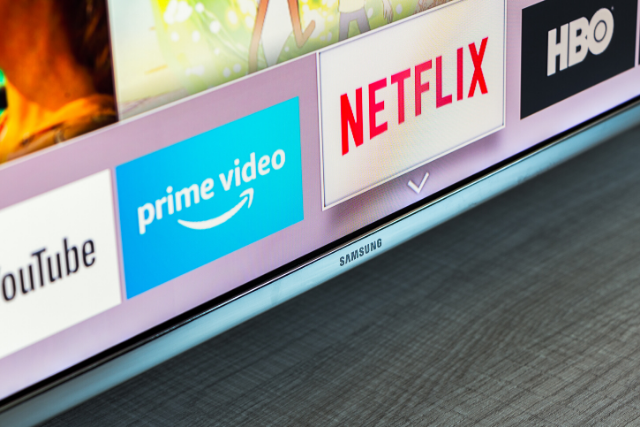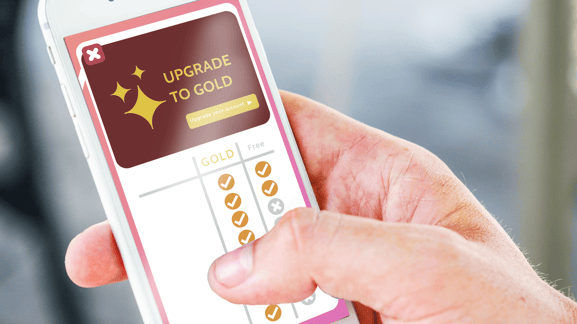
If you use products like Netflix, Spotify, Amazon Prime, Blue Apron, Birchbox, Dollar Shave Club, GoDaddy, Playstation Now, iCloud, Fitbit, etc. then you know how convenient subscription-based services can be.
But do you really know how many monthly subscriptions you're paying for at the moment?
According to a 2018 survey by WMG, 84% of Americans grossly underestimate what they spend on subscription-based services. The study found that, on average, people assume they pay around $79.74 a month on recurring monthly expenses.
Then they ran the math. And boy, they were way off.
The actual cost was closer to $238 a month.
What makes people feel like they're spending 197% less on subscription services than they actually are?
Subscription creep, that's what.
Something happens to your brain when you commit to monthly services under $20. They fade into the background —out of sight, out of mind. Because $20 a month won't set you back, right?
Take a step back and calculate the cost per year of each of those products and it’s easy see how recurring charges add up. Many of these services automatically renew every month, so if you're not paying attention, they're easy to overlook.
Sometimes subscription commitments can happen without you even realizing it. Take a look at Yousician, an interactive music service that teaches users how to play musical instruments on their mobile device. The app offers a free premium trial that you can unlock with the click of a button. However, if the trial ends before you go through all the steps to unsubscribe, an annual fee of $100+ will be plucked from your bank account. And it will happen every year for eternity until you go into iTunes and unsubscribe.
The point is, many companies make subscribing so easy that you may not even realize what you signed up for until it’s too late.

Mobile app stores have your payment information on file, so at any moment you're just one click away from getting into bed with a recurring monthly expense.
Wrangle your apps and cut the fat.
Using the chart below, you can determine if a monthly service is a useful investment or a financial drain by sorting them into four categories based on cost and benefit. Start by listing out all of your current subscriptions. Remember to list the annual ones, too, like Amazon Prime.
You may not be able to recall everything you’re paying for. That's OK. If you need a reminder of which services you're currently paying for, apps like Truebill and Trim can scan your expenses, identify subscriptions and group them into one bucket to give you a holistic view of your subscription list.
Now, determine the necessity level of your subs by comparing how much you use them against how much you pay for them.
| Category | Cost and Benefit |
| High cost, high use. | $21 or more monthly. Use more than 10 days per month. |
| Low cost, high use. | $20 or less monthly. Use more than 10 days per month. |
| High cost, low use. | $21 or more monthly. Use less than 10 days per month. |
| Low cost, low use. | $20 or less monthly. Use less than 10 days per month. |
High cost, high use.
Services like YouTube TV ($50/month) or a digital subscription to the Wall Street Journal ($37/month) can cost you a pretty penny every month, and around $400-$600 annually. But if you're taking advantage of them regularly, it's money well spent. If a high cost, high use expense plays a starring role in your daily routine or leisure time, it's understandable why you'd want to invest in that service.
As your lifestyle continues to evolve and change, be sure to keep a close eye on these expenses. Something as simple as a schedule change at work, or as monumental as a new kid could shift these luxuries into the high cost, low use category.
Low cost, high use.
These are subscriptions that give you your money's worth because you use them so much. The kind of product that you'd feel comfortable recommending to anyone, regardless of their salary. In this category you'll commonly find popular services like Netflix, Hulu Plus, Spotify Premium and Fitbit Premium.
Just remember, this is where a sizable chunk of your income is going every month. Don't avoid doing the math. If you're ever in a bind — like, a red-alert, I-can't-afford-to-pay-rent kind of bind, do the smart thing and cut these subscriptions loose. They'll still be there when your finances are in a better place.
High cost, low use.
Subscriptions in the high cost, low use category should be cancelled, no discussion. One good example of this is when people neglect meal kit delivery services like HelloFresh or Blue Apron. These products do a great job teaching kitchen-shy adults how to cook fresh, healthy meals. However, things come up. People get busy. And busy people don’t always feel like preparing intricate meals at the end of the day. It becomes a logic call. If your family is paying $139.84 per week to have high quality ingredients delivered to your door just to have those ingredients rot away in your crisper drawer, you should consider if that money would be better spent elsewhere.
Another common high cost, low use recurring expense is your gym membership. A recorded 67% of people with gym memberships never use them, despite dropping over $50 a month for the privilege of skipping a workout.
Low cost, low use.
Expenses in this category tend to be subscriptions that were forgotten about, or needed at one point in your life, but are no longer relevant. These are the recurring payments dragging you down and it's up to you to decide if the service is a necessity or not. Someone who subscribed to Kindle Unlimited in 2015 and then tragically lost her Kindle at the beach in 2017 could still be paying $9.99 for a service that’s no longer relevant to her lifestyle.
More and more mobile apps like Photoshop Express, Cozi, Comixology and Translate Assistant (just to name a few) offer premium features for a small recurring monthly payment. Take into consideration that the average person has 80 apps installed on their smartphone, uses 30 of those monthly and just nine daily. Will those premium payments get put to good use, or just disappear in the clutter?
The bottom line.
Conquering subscription fatigue is all about prioritizing your needs over your wants.
If you're not ready to part ways with your monthly service, at least try looking for alternative solutions — like renting, buying used, or splitting the cost with someone. Fun fact: 80% of consumers admit to sharing a TV/movie streaming subscription or premium music plan with at least one other person.
Sometimes growing financially means being honest with yourself about which purchases add meaning to your life. Any time you can cut down on unnecessary expenses, you create more room in your budget for bigger, better goals.
Sources:
https://hubresearchllc.com/reports/
https://www.wfmz.com/features/what-the-tech/what-the-tech-too-many-subscriptions/article_974a109c-e9ba-11e9-847a-bbf679d90568.html
https://www.thebalanceeveryday.com/how-subscription-services-can-ruin-your-budget-4118106
https://www.marketwatch.com/story/youre-spending-more-on-your-subscription-services-than-you-think-2018-07-25
https://www.usatoday.com/story/tech/2019/10/21/disney-apple-tv-netflix-amazon-can-we-tame-subscription-fatigue/3995686002/
Like this article? Subscribe to our blog and have great financial insights delivered to your inbox weekly.




